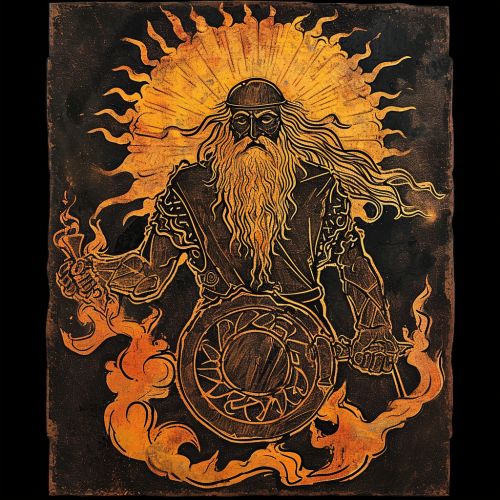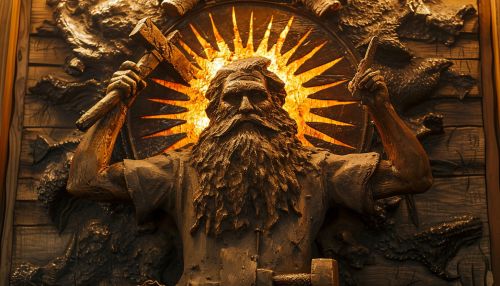Svarog
Origins and Etymology
Svarog, in Slavic mythology, is a deity associated with the sky, the sun, and fire. The name 'Svarog' is derived from the Proto-Slavic word '*svarъ', which signifies 'bright, shining, light, clear'. The deity's name is often linked to the Indo-European root '*s(w)e', which means 'one's own, self'. This connection suggests a possible interpretation of Svarog's name as 'self-shining' or 'self-bright'.


Mythological Descriptions and Symbolism
Svarog is often depicted as a powerful and wise god, a master blacksmith who forges the sun and sends it into the sky. He is also associated with celestial fire and divine light. In some Slavic traditions, Svarog is considered the father of Dazhbog, the sun god, and Perun, the god of thunder and lightning.
Svarog's association with fire and the sun has led to various symbolic interpretations. Fire, in many ancient cultures, was seen as a purifying and transformative force. Similarly, the sun was often associated with life-giving energy and divine illumination. Thus, Svarog's connection to these elements could be seen as a representation of spiritual enlightenment and transformation.
Worship and Rituals
The worship of Svarog was widespread among the Slavic peoples. He was revered as a supreme deity, and various rituals and festivals were dedicated to him. These often involved fire, reflecting Svarog's association with this element. For example, during the festival of Kupala Night, bonfires were lit to honor Svarog and to celebrate the summer solstice.
Historical and Cultural Impact
The worship of Svarog had a significant impact on Slavic culture and society. His association with the sun and fire influenced various aspects of Slavic life, from agriculture and warfare to art and mythology. Despite the Christianization of the Slavic lands, the reverence for Svarog persisted in folk traditions and customs.
Modern Interpretations and Revival
In recent years, there has been a resurgence of interest in Slavic mythology and the worship of Slavic deities, including Svarog. This revival is often associated with the broader movement of neopaganism, which seeks to reconnect with pre-Christian spiritual traditions.
